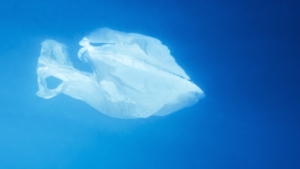New ways to monitor and reduce underwater plastic pollution

Mitigating underwater plastic pollution is essential for ensuring sustainable development. The Pervasive Data Science group at University of Helsinki has been developing new ways to monitor, and ultimately help to reduce, underwater plastic pollution using underwater drones and optical sensing.
The research has been supported by HIIT and carried out in collaboration with University of Tartu, Estonia, University of Turin, Italy and Alexandria University, Egypt.
The project developed a prototype system, PENGUIN, for underwater pollution monitoring that integrates sensing and computing components into an off-the-shelf underwater drone. The goal of PENGUIN is to increase the scale of pollution monitoring while reducing the effort and cost of monitoring underwater areas. It targets early detection and classification of plastic debris, with the goal of supporting cleaning efforts before the plastics break into harmful microplastics.
The sensing components in PENGUIN identify plastic debris using computer vision and use optical sensing (green light reflectance and absorption) to classify plastics according to their material codes (resin identification code RIC). The two-phase approach has been designed to take advantage of existing capabilities in underwater drones (cameras) while augmenting them with low power sensor technology that can further refine the captured information.
Controlled testbed experiments demonstrated that PENGUIN can accurately characterize different plastics in underwater conditions, reaching close to 90% accuracy across different plastic types, and operate robustness in different lightning conditions.
As part of the project, the research also explored how old smartphones placed into waterproof containers placed on top of the underwater drone can offer computational support for running the computer vision-based debris recognition. Encouraged by the promising results, the research group is continuing the development of underwater pollution monitoring solutions with the eventual aim of enabling autonomous operations.
More information:
Associate Professor
Department of Computer Science, University of Helsinki